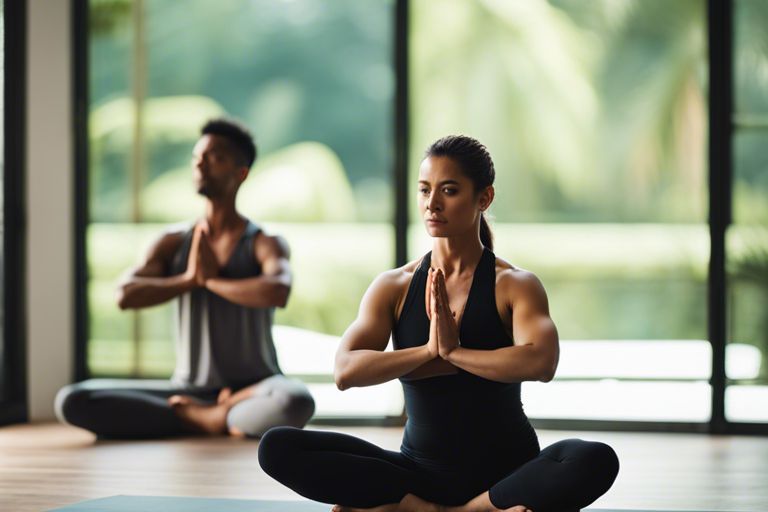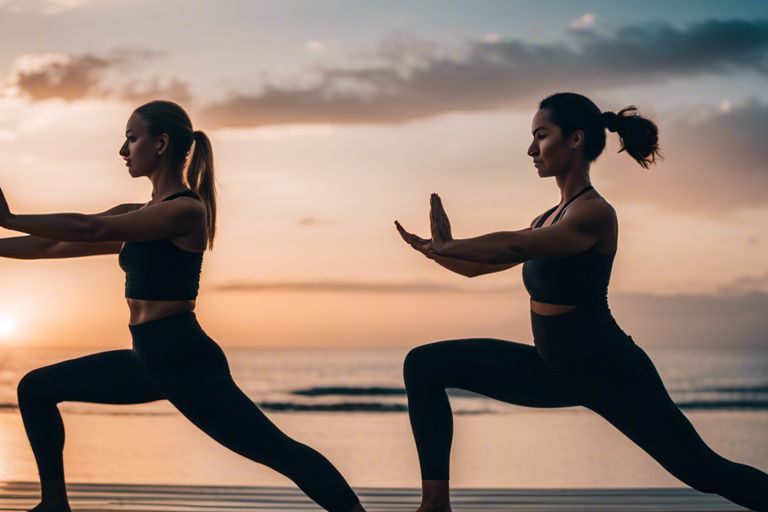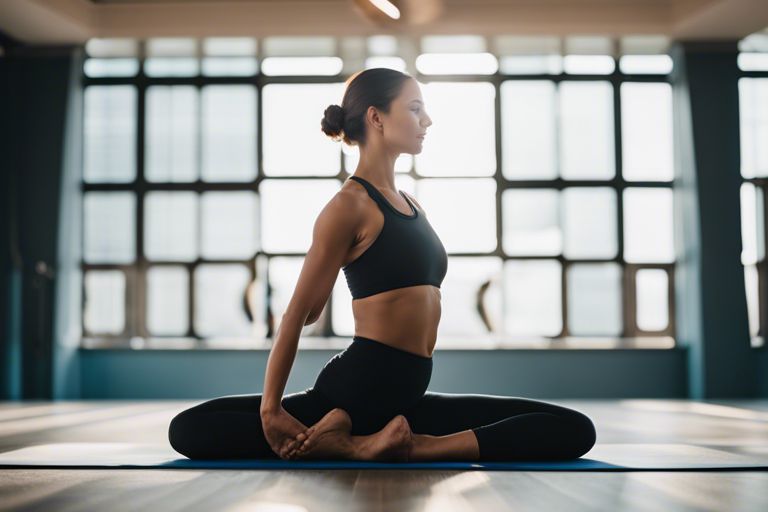There’s a peaceful journey awaiting you on the mat, where Hatha Yoga and Vinyasa beckon with their distinct styles. Understanding the differences can guide you to the practice that resonates deeply with you. Dive into the traditional and steady practice of Hatha, or flow through the dynamic and fluid movements of Vinyasa. Embrace the one that nourishes your mind, body, and soul.

Key Takeaways:
- Hatha Yoga: Focuses on alignment, slower-paced movements, and holding poses for longer periods of time.
- Vinyasa Yoga: Involves flowing movements synchronized with breath, creating a dynamic and continuous practice.
- Choosing the Right Practice: Select Hatha Yoga for a more grounding and meditative experience, while Vinyasa Yoga is ideal for those seeking a more dynamic and physically challenging practice.
The Roots of Hatha and Vinyasa Yoga
Origins of Hatha Yoga
Before venturing into the differences between Hatha and Vinyasa yoga, it’s vital to understand where these practices originated. Hatha Yoga, one of the oldest forms of yoga, dates back to the 15th century in India. The word ‘Hatha’ comes from the Sanskrit words ‘ha’ meaning sun and ‘tha’ meaning moon, representing the balance between opposing forces.
Evolution of Vinyasa Yoga
For an understanding of Vinyasa Yoga, it is crucial to recognize its evolution from Hatha Yoga. Vinyasa, characterized by its flow-like sequences and synchronized breathwork, stemmed from the traditional Hatha practice. However, Vinyasa Yoga gained popularity in the late 20th century in the West, emphasizing linking movement with breath in a dynamic and continuous flow.
An vital aspect of Vinyasa Yoga is the coordination of breath and movement. In Vinyasa Yoga, each movement is linked to an inhale or exhale, creating a seamless transition between poses. This continuous flow not only builds strength and flexibility but also helps to calm the mind and improve focus.
The beauty of these two yoga styles lies in their ability to offer unique benefits to practitioners. Whether you resonate more with the traditional and precise movements of Hatha Yoga or the fluid and dynamic sequences of Vinyasa Yoga, both practices have the power to transform your body, mind, and spirit.

Key Differences Between Hatha and Vinyasa
Some
Focus and Intention
Between Hatha and Vinyasa yoga, one of the key differences lies in their focus and intention. Hatha yoga typically involves holding poses for a longer period, focusing on alignment, and fostering a sense of relaxation and calmness. It is a gentle practice that is perfect for beginners or those looking to move at a slower pace.
Vinyasa yoga, on the other hand, is more dynamic and flowing, with a focus on linking breath to movement. The intention behind Vinyasa is to create a fluid and rhythmic practice that builds heat in the body, strengthens muscles, and improves cardiovascular health. If you enjoy a more fast-paced and energetic practice, Vinyasa might be the right choice for you.
Some
Breathing Techniques and Sequencing
For Hatha yoga, the breath is emphasized but not necessarily synchronized with movement. Each pose is typically held for a few breaths, allowing you to deepen your stretch and focus on alignment. The sequencing in Hatha yoga is more structured, often following a specific pattern or sequence.
Breathing in Vinyasa yoga is a crucial component as each movement is synchronized with either an inhale or an exhale. This dynamic practice aims to create a moving meditation, linking breath with movement to cultivate a sense of flow and grace. The sequencing in Vinyasa is more creative and varied, offering a more dynamic and unpredictable practice.
Physical and Mental Benefits
Hatha Yoga’s Emphasis on Physical Postures
Keep your focus on Hatha Yoga if you are looking to research deep into each physical posture. Hatha yoga emphasizes holding poses for longer periods, allowing you to build strength, flexibility, and stability in each posture. This slow and steady approach not only helps in improving alignment but also enhances mind-body connection as you fully immerse yourself in the present moment while holding the pose.
Vinyasa Yoga’s Focus on Flow and Movement
Flow with Vinyasa Yoga if you prefer a more dynamic practice that focuses on continuous movement. In Vinyasa yoga, the transition between poses is as important as the poses themselves. This constant movement allows you to build cardiovascular endurance, increase blood circulation, and ignite your inner fire. The fluidity of the practice helps in improving breathing and mindfulness as you synchronize each movement with your breath.
Benefits: Vinyasa Yoga’s continuous flow and movement can lead to a calmer mind and reduced stress levels as you stay present in the sequence. However, it is important to pay attention to proper alignment and not rush through transitions to avoid potential injuries.
Choosing the Right Practice for You
All
Considering Your Fitness Level and Goals
Right choice of practice depends on your fitness level and goals. If you are new to yoga or prefer a slower-paced practice focused on holding poses and gentle stretching, Hatha yoga might be the best option for you. On the other hand, if you are looking for a more dynamic practice that focuses on linking breath with movement to build strength and flexibility, Vinyasa yoga could be the way to go.
All
Exploring Your Personal Style and Preferences
Practice what resonates with you. Are you someone who enjoys structure and alignment in poses? Then Hatha yoga could be your preferred choice. If you thrive in a fast-paced, flowing practice that keeps you on your toes, Vinyasa yoga might be more suited to your style.
Personal preferences play a crucial role in choosing the right yoga practice. Consider factors such as music, atmosphere, and instructor personality to ensure you find a practice that aligns with your values and preferences.
To wrap up
The journey of discovering the right yoga practice for you is a deeply personal and introspective one. As you explore the differences between Hatha and Vinyasa yoga, remember that both practices offer unique benefits that cater to different preferences and intentions. You may find that Hatha yoga’s slower pace and focus on alignment resonate with your desire for a grounded and mindful practice. On the other hand, Vinyasa yoga’s dynamic flow and emphasis on breath-to-movement may be more suited to your need for a physically challenging and energizing experience.
Ultimately, the “right” practice is the one that aligns with your goals, preferences, and current state of being. Whether you choose Hatha or Vinyasa, both paths lead to the same destination of self-awareness, inner peace, and holistic well-being. So, allow yourself to be guided by your intuition and listen to what your body and mind need in this moment. Embrace the practice that speaks to your soul and nurtures your entire being on your yoga journey.
FAQ
Q: What is Hatha Yoga?
A: Hatha Yoga is a traditional form of yoga that focuses on physical postures (asanas) and breathing techniques (pranayama) to achieve balance between body and mind.
Q: What is Vinyasa Yoga?
A: Vinyasa Yoga is a more dynamic and flowing style of yoga that synchronizes movement with breath. It is often referred to as “flow” yoga.
Q: How do I choose between Hatha and Vinyasa Yoga?
A: If you prefer a slower-paced practice with a focus on alignment and holding poses, Hatha Yoga may be right for you. If you enjoy a faster-paced practice with smooth transitions between poses, you may enjoy Vinyasa Yoga more. Ultimately, the best practice for you is the one that resonates with your body and spirit.











